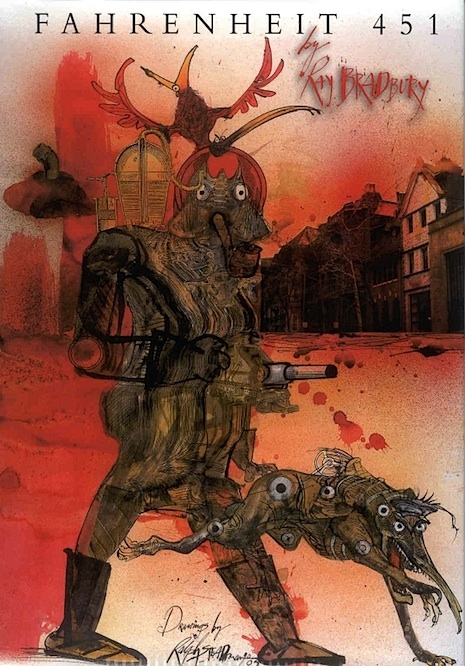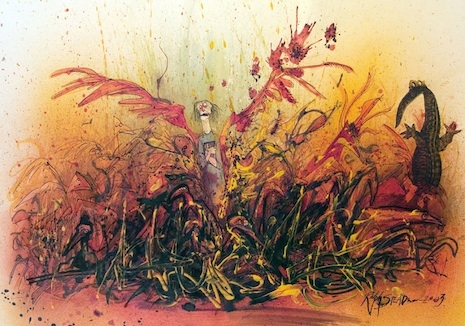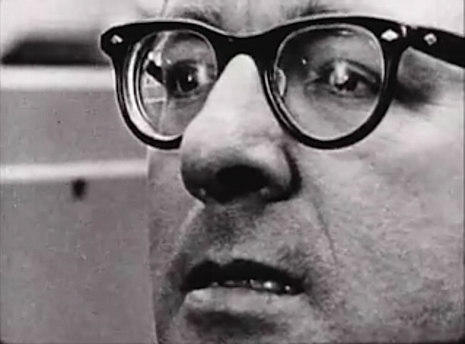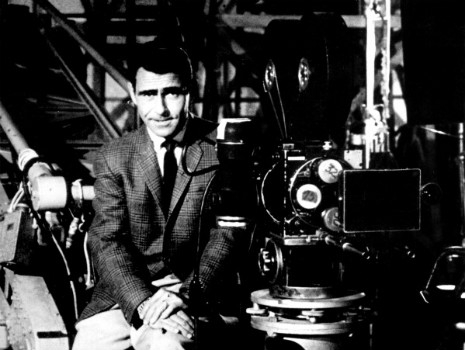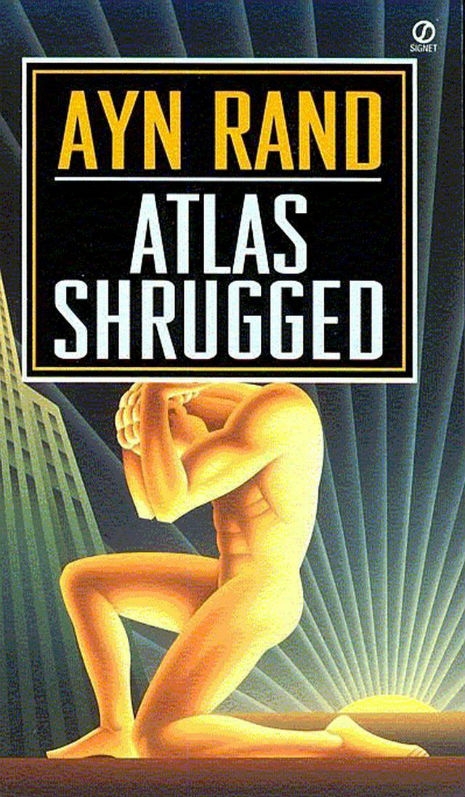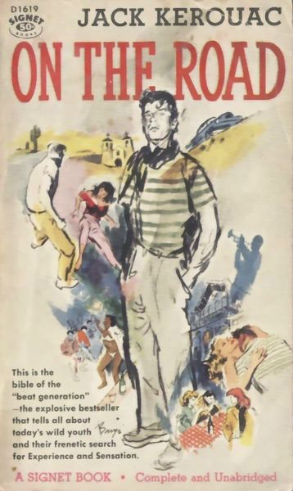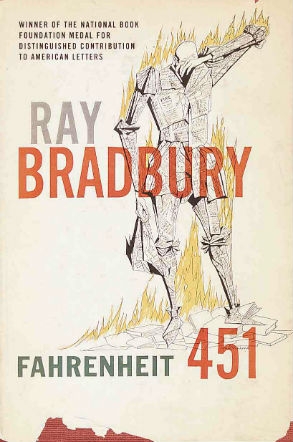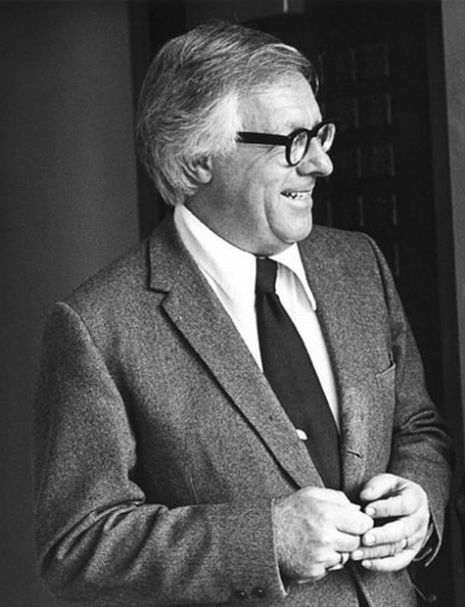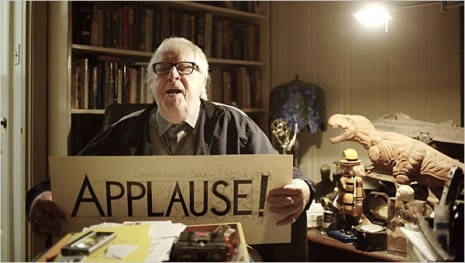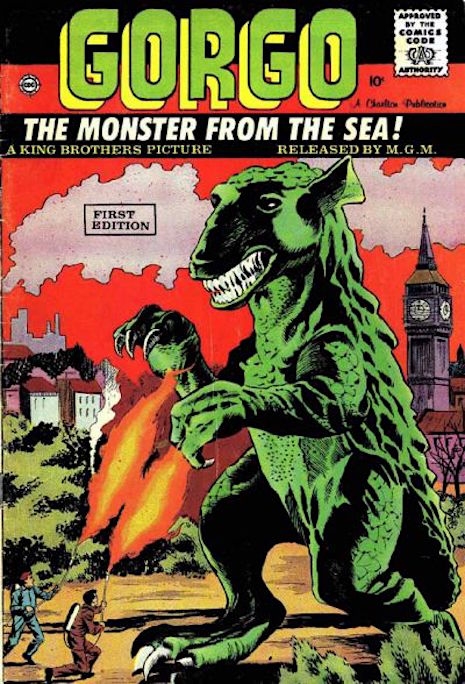
When Ray Bradbury wrote “The Fog Horn” he probably didn’t imagine the whole bestiary of monsters his short story would inspire. Though his beast from the deep attracted by the lonesome call of a fog horn made only a fleeting appearance, it was enough to encourage producers to turn Bradbury’s story into a hit movie The Beast from 20,000 Fathoms in 1953. The creature in this film (designed by Ray Harryhausen) was a fictional dinosaur called the Rhedosaurus, which once set loose from its cryogenic sleep deep within the frozen Arctic laid waste to New York. The allegory of a hideous giant flattening whole cities and killing thousands of innocent lives was highly topical at a time when nuclear annihilation was a mere push button away.
This ole beast partly (alongside Edgar Wallace’s King Kong which had been re-released into cinemas in 1952) inspired Japanese movie makers to come up their own reptilian giant Godzilla in 1954. (Godzilla is apparently made up from the Japanese words for “whale” and “gorilla.”) Instead of using Harryhausen’s beautiful but time-consuming and finicky stop-motion animation, the Toho studios opted to use a man in a rubber suit smashing up balsa wood sets to save on time and money.
Director of The Beast from 20,000 Fathoms, Eugène Lourié went onto make The Colossus of New York about a cyborg that wrecks the Big Apple, before coming up with his own story of gnarly sea monster, this time one of biblical proportions Behemoth (aka The Giant Behemoth) in 1959.
Lourié then forged ahead with making his first full-color monster movie Gorgo, which was in part a homage to Godzilla and to Bradbury’s original short story, but he also pushed a strong environmentalist moral. Gorgo is really just a revenge flick of an angry mom who comes to get even with those bad guys who kidnapped her baby son. Gorgo is the name given to the kidnapped offspring—in part inspired by Medusa and by the Spartan Queen Gorgo, who was an early cryptanalyst able to discern the secret message hidden on a wooden tablet covered with wax. Gorgo’s mom is called Ogra. While most think Gorgo does all the smashing and a-chomping, it was in fact mommie dearest Ogra.
The film also has a second moral message which in this case is that a man sows his own destruction, as the film’s central characters Captain Joe Ryan (Bill Travers) and Sam Slade (William Sylvester) who capture Gorgo off the coast of Ireland chose a sinful greed of money rather than what was best for the creature and the rest of humanity.
In an obvious nod to Godzilla, the film was originally set in Japan. However, this was thought too close to the Japanese mega-monster, so Paris then Australia were considered before producers picked London as the global metropolis marked for destruction.
American producers Frank and Maurice King saw money-making potential in having Gorgo merchandise ready for the film’s release in 1961. This included toys, posters, novelization, and a series of short-lived comic books that featured Gorgo as a cross between a chomp-and-smash monster and a sometime savior of humanity who can take on aliens from outer space and other monsters who want to wipe out mankind. Twenty-three issues of the Gorgo comics were published between 1961 and 1965 by Charlton Comics. Among the many artists who worked on this rare and highly entertaining comic was Steve Ditko, who went on to co-create Spider-Man. Gorgo also appeared in a comic book spin-off series called Gorgo’s Revenge/The Return of Gorgo between 1962-64.
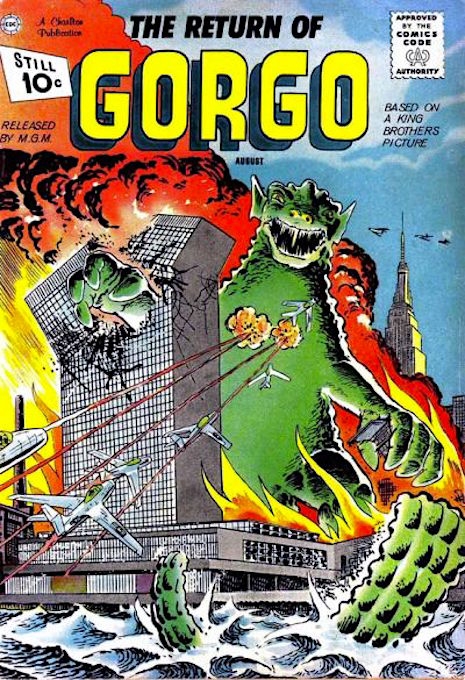

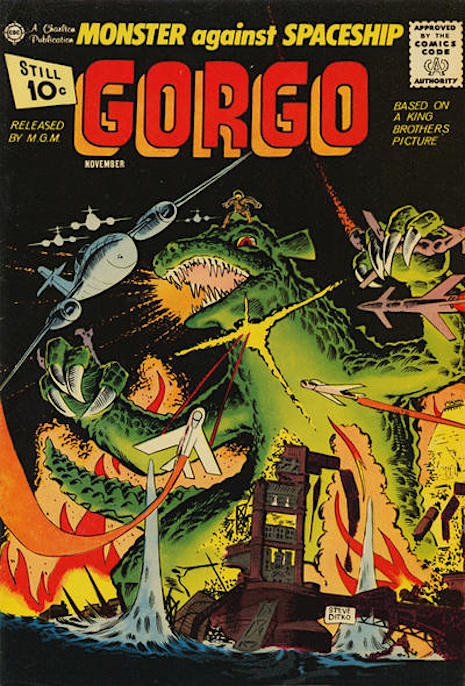
More glorious Gorgo covers, after the jump….






